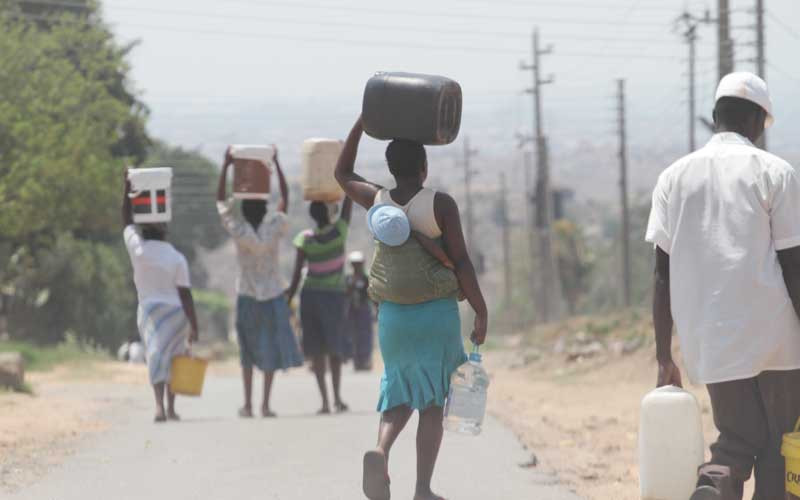
BULAWAYO City Council (BCC) has warned that Upper Ncema and Lower Ncema will likely be decommissioned in about six months, a development set to further worsen the city’s already dire water situation.
Residents are enduring one of the worst water challenges in years owing to an El Niño-induced drought.
According to available statistics, the city’s supply dams are 41% full as of last week.
City strategic engineer Prosper Mateza told Southern Eye in an interview that the city’s water situation was worsening.
“Upper and Lower Ncema are depleting this year around August. Lower Ncema is fed from Upper Ncema and all the dams would have been depleted,” Mateza said.
The local authority has so far decommissioned one supply dam, Umzingwane, owing to poor inflows during the current rain season, reflecting the challenge which has perennially hounded the metropolitan for years.
A number of efforts to end Bulawayo’s recurrent water woes, including the Matabeleland Zambezi Water Project, are yet to bear tangible fruit.
Government recently rejected a plea by the local authority to declare the city a water crisis area to pave the way for the mobilisation of international support to avert a major crisis.
- Bulawayo struggles to clear housing backlog
- Bulawayo struggles to clear housing backlog
- Egodini developer changes tune
- Outcry over city’s new rates, tariffs
Keep Reading
Late last year, the government deployed a technical committee to find solutions to the water crisis.
Instead, the city’s water woes have deepened with the government saying the committee was still studying the situation much to the dismay of locals who are going for several days without water.
Lawyers representing Bulawayo Progressive Residents Association (BPRA) wrote a letter last week to the local authority protesting over the water challenges.
BPRA described the situation as an assault on their right to clean and potable water as enshrined in section 77(a) of the Constitution.
Mateza said the city may be left with Inyankuni, Insiza Mayfair and Mtshabezi when Lower Ncema and Upper Ncema are decommissioned.
“In terms of Mayfair and Mtshabezi supply dams, there is pipeline restriction and, therefore, it is likely to deplete around 2026,” he said.
“There are plans to duplicate lnsiza Mayfair pipeline and also for Mtshabezi so that we can take as much water from the supply dams.
“There was a study that was done on the five of the supply dams apart from Mtshabezi; the study concluded that the yield at our supply dams is decreasing and in 2030 we will be having to take half of what we used to take somewhere around the 1980s.”
BCC has since come up with various plans to balance the demand and supply of water in the city.
“So we are currently doing some strategies, one of them being water (rationing) in order to balance the demand and supply,” he told Southern Eye.
“We are also trying to reduce the water losses that we have in the city through the replacement of pipes and also replacing old meters.”
BCC was yet to come up with a position on tapping into the recycling of water at the heavily polluted Khami dam, which was the first supply dam to be built for the city in 1927 and was decommissioned in 1988 due to heavy pollution.
Council believes advanced technologies would enable the recycling of Khami Dam water for potable water use.
Council estimates that it requires about US$26 million to purify the dam’s water for consumption.






